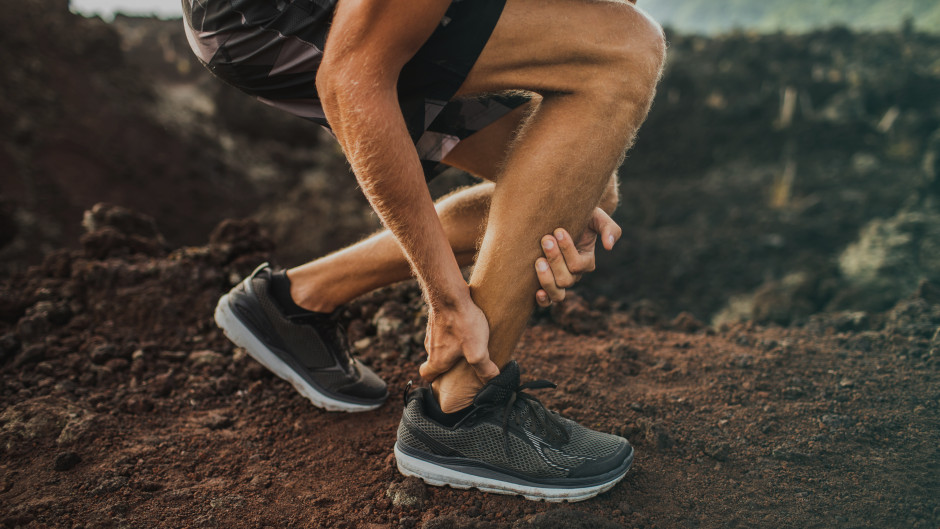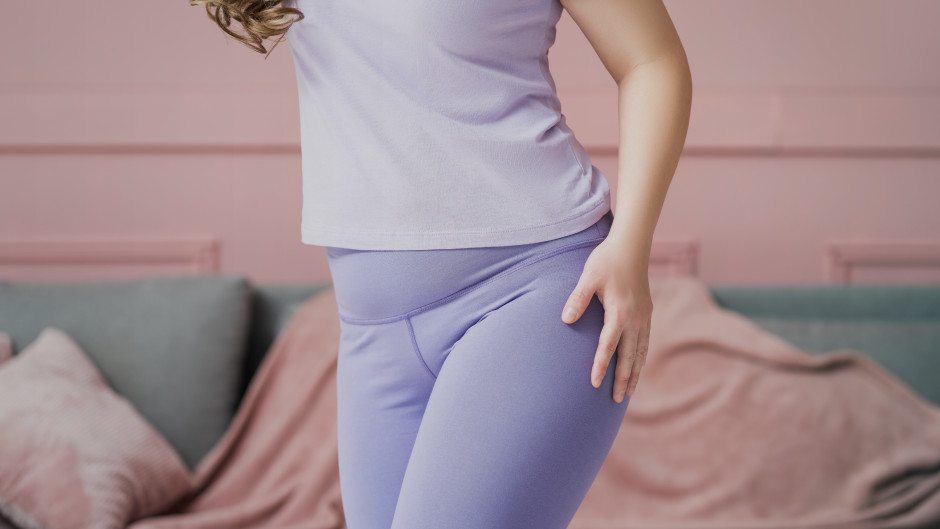ADAPTATIONS IN MUSCLE MORPHOLOGY AND ARCHITECTURE IN RESPONSE TO EXERCISE — AN INCLUSIVE GUIDE
The coordinated action of muscles and tendons generates efficient movement. Muscles adapt to the different kinds of loads imposed upon them. The synchronized activation and recruitment of motor units of a single muscle and agonists-antagonists muscle groups result in well-regulated movement. Muscles generate the force, transfer it to tendons, and then to bones to produce movement. Skeletal or striated muscles work with the skeletal system to move the body parts and help the body in locomotion.
SKELETAL MUSCLE STRUCTURE
The skeletal muscles consist of muscle bundles, muscle fibers, myofibrils, and connective tissue layers surrounding these structures, nerves, and blood vessels. Epimysium is the connective tissue layer surrounding each muscle. The perimysium is the connective tissue layer covering each muscle bundle, and the endomysium surrounds each muscle cell or fiber.
 Reproduced from Colorado Community College System
Reproduced from Colorado Community College System
MUSCLE PLASTICITY
Muscles adapt to the stress imposed upon them by multiple mechanisms. These mechanisms include hypertrophy, hyperplasia, and longitudinal growth of myofibers. The muscles adapt and undergo structural changes to withstand the loads put on them to work efficiently with these increased loads. The figure below illustrates the mechanisms resulting in muscle adaptation and the radial growth of muscle fascicles.
 Reproduced from Jorgenson et al, 2020
Reproduced from Jorgenson et al, 2020
A study by Goldspink in 1985 has shown a change in the number of sarcomeres when we mobilize and immobilize the animal muscles. When they put a cast and immobilized the muscles of young animals, the sarcomere growth slowed down, but when they removed the cast, the muscle growth sprouted, reaching the normal number of sarcomeres. The same happened to adult muscles. When they immobilized the adult muscles in lengthened and shortened positions, the sarcomere growth increased and reduced, respectively. The study clearly highlights that muscles are highly plastic throughout their lifespan (1).
 Reproduced from Goldspink JEB, 1985
Reproduced from Goldspink JEB, 1985
MORPHOLOGICAL ADAPTATIONS TO LOADING AND UNLOADING
Mechanical stress imposed upon a muscle force it to change its structure to perform the task better. The contractile tissue in the muscle increases or decreases in size in response to the loading and unloading of muscle. The size of the muscle is representative of the stresses imposed upon it.
ADAPTATIONS TO LOADING
The cross-sectional area of the muscle increases with increasing the loads put on it. The increased cross-sectional area allows greater force generation and maximizes the output against higher loads. After resistance training, an increase in the cross-sectional area of Type-I (slow-twitch) and Type-II (fast-twitch) muscle fibers occurs (2). These hypertrophied muscle fibers combat the increasing load by modifying their architecture and increasing the contractile component of muscle fiber to produce greater force.
The following image shows the cross-sectional area of a single muscle fiber of fast and slow-twitch fibers pre and post-training.
 Reproduced from Aagaard et al, 2001
Reproduced from Aagaard et al, 2001
Muscle cross-sectional area, fascicle length, and pennation angle increase with resistance training (3).
ADAPTATIONS TO UNLOADING
Complete bed rest for ten days can result in a 4.1% reduction in Vastus Medialis (VM) and 5.2% Quadriceps Femoris (QF) muscle volume. The bed rest also results in decreased force generation, an increased time to peak force, and a decrease in muscle quality (4).
Studies conducted to evaluate muscle adaptation to immobilization in animals concluded that immobilizing the muscle in lengthened position results in the lengthening of the muscle primarily because of the stretching of existing sarcomeres and not due to the generation of new sarcomeres. The immobilization resulted in a minimal reduction in pennation angle and muscle thickness (5).
Lack of physical activity does not affect only the muscles but also the tendons. Deterioration in the tendon's mechanical properties occurs within two weeks of unilateral leg suspension. (6).
MUSCLE ARCHITECTURE- GEOMETRICAL STRUCTURE OF MUSCLE
Muscle architecture is the arrangement of the muscle fibers within a muscle, relative to the axis of force generation (7). The parameters in muscle architecture include muscle length (Lm), fiber length (Lf), pennation angle Θ, and physiological cross-sectional area (PCSA).
MEASUREMENT OF MUSCLE ARCHITECTURE
We can measure the muscle architecture with a B-mode ultrasound. After aligning to the fascicle plane, we can measure the muscle thickness (difference between the superficial and deep aponeurosis), pennation angle (the fiber angle relative to the force-generating axis, Θ), and the fascicle length (8).
 Reproduced from Franchi et al, UMB, 2018
Reproduced from Franchi et al, UMB, 2018
The physiological cross-sectional area (PCSA) is different from the normal cross-sectional area and is representative of the maximal strength of the muscle. PCSA cuts all the fibers at a right angle and can be measured by using the following equation (7):
PCSA (mm2)=muscle mass g. cosineΘρ g/mm3. fiber length (mm)
Physiological cross-sectional area (PCSA) affects the force production by the muscle. The greater the PCSA, the greater the force production by the muscles. Muscle architecture greatly affects the functional capacity of the muscle.
TYPES OF MUSCLE CONTRACTIONS IN RESPONSE TO LOADING
Muscles can contract concentrically or eccentrically depending upon the task they are performing. Both these contractions are different in terms of the mechanism of force generation, force production, and resulting adaptations in muscle.
TYPES OF MUSCLE CONTRACTION
CONCENTRIC CONTRACTION
During concentric contraction, muscle produces force while shortening. During the concentric contraction, the sarcomeres shorten. The concentric contraction increases the muscle volume primarily by increasing the pennation angle (9). During the concentric contraction, muscles work against gravity to generate movement. Concentric contraction produces greater radial growth.
ECCENTRIC CONTRACTION
During an eccentric contraction, muscle produces force while lengthening. During an eccentric contraction, the sarcomeres lengthen. The eccentric contraction increases the muscle volume primarily by increasing the fascicle length (9). During the eccentric contraction, muscle work along the gravity to generate movement. Eccentric contraction produces greater longitudinal growth.
 Reproduced from Wikimedia commons
Reproduced from Wikimedia commons

By understanding concentric and eccentric muscle contraction and how muscles adapt to different loading types, we can develop a strategy that coincides with our goals. If we want to increase muscle thickness, we will increase the pennation angle to increase muscle bulk. Muscle architectural changes produced in this way will result in functional implications matching our objectives.
SKELETAL MUSCLE EXTRACELLULAR MATRIX (ECM)
The extracellular matrix of skeletal muscles bears most of the passive load imposed on the muscle. While the elastic component of the muscle is responsible for force generation, the extracellular matrix work as a system of force transmission. When the elastic component of the muscle produces the force, the connective tissue of the extracellular matrix undergoes stretch and generates tension. Once the tension is generated, it is transferred actively and passively along these structures. It creates a system of force generation and force transmission.
 Reproduced from Gillies & Lieber, Muscle & Nerve, 2011
Reproduced from Gillies & Lieber, Muscle & Nerve, 2011
TENDON RESPONSE TO DIFFERENT KINDS OF LOADING
Muscles respond differently to concentric and eccentric contraction exercises, while tendons appear blind to the type of mechanical stimulus. Tendon responds to chronic stress by increasing the tendon stiffness and Young’s modulus. Concentric and eccentric contractions result in similar overall changes in tendon Young’s modulus.
Strength generation and muscle function are not governed by a single factor. A multifactorial system influences muscle function and force generation. It can include fascicle length, pennation angle, muscle fiber recruitment, muscle quality, PCSA (Physiological cross-sectional area), and muscle thickness. Athletes with a high training volume tend to have a greater pennation angle.
MUSCLE ADAPTATIONS TO TENDON RUPTURE
Following the Achilles tendon rupture, the gastrocnemius muscle fascicle length decreases while the pennation angle increases to compensate for the reduced fascicle length. The muscle thickness also decreases following the tendon rupture. The shortened fascicle length persists while the pennation angle returns to the normal value within four weeks post-injury (10).
REFERENCES
- Goldspink G. Malleability of the motor system: a comparative approach. J Exp Biol. 1985;115:375-91.
- Aagaard P, Andersen JL, Dyhre-Poulsen P, Leffers AM, Wagner A, Magnusson SP, et al. A mechanism for increased contractile strength of human pennate muscle in response to strength training: changes in muscle architecture. J Physiol. 2001;534(Pt. 2):613-23.
- Seynnes OR, de Boer M, Narici MV. Early skeletal muscle hypertrophy and architectural changes in response to high-intensity resistance training. J Appl Physiol (1985). 2007;102(1):368-73.
- Monti E, Reggiani C, Franchi MV, Toniolo L, Sandri M, Armani A, et al. Neuromuscular junction instability and altered intracellular calcium handling as early determinants of force loss during unloading in humans. The Journal of Physiology. 2021;599(12):3037-61.
- Williams PE, Goldspink G. Changes in sarcomere length and physiological properties in immobilized muscle. J Anat. 1978;127(Pt 3):459-68.
- de Boer MD, Maganaris CN, Seynnes OR, Rennie MJ, Narici MV. Time course of muscular, neural and tendinous adaptations to 23 day unilateral lower-limb suspension in young men. J Physiol. 2007;583(Pt 3):1079-91.
- Lieber RL, Fridén J. Functional and clinical significance of skeletal muscle architecture. Muscle & Nerve. 2000;23(11):1647-66.
- Franchi MV, Longo S, Mallinson J, Quinlan JI, Taylor T, Greenhaff PL, et al. Muscle thickness correlates to muscle cross-sectional area in the assessment of strength training-induced hypertrophy. Scand J Med Sci Sports. 2018;28(3):846-53.
- Franchi MV, Atherton PJ, Reeves ND, Flück M, Williams J, Mitchell WK, et al. Architectural, functional and molecular responses to concentric and eccentric loading in human skeletal muscle. Acta Physiol (Oxf). 2014;210(3):642-54.
- Hullfish TJ, O'Connor KM, Baxter JR. Gastrocnemius fascicles are shorter and more pennate throughout the first month following acute Achilles tendon rupture. PeerJ. 2019;7:e6788.



